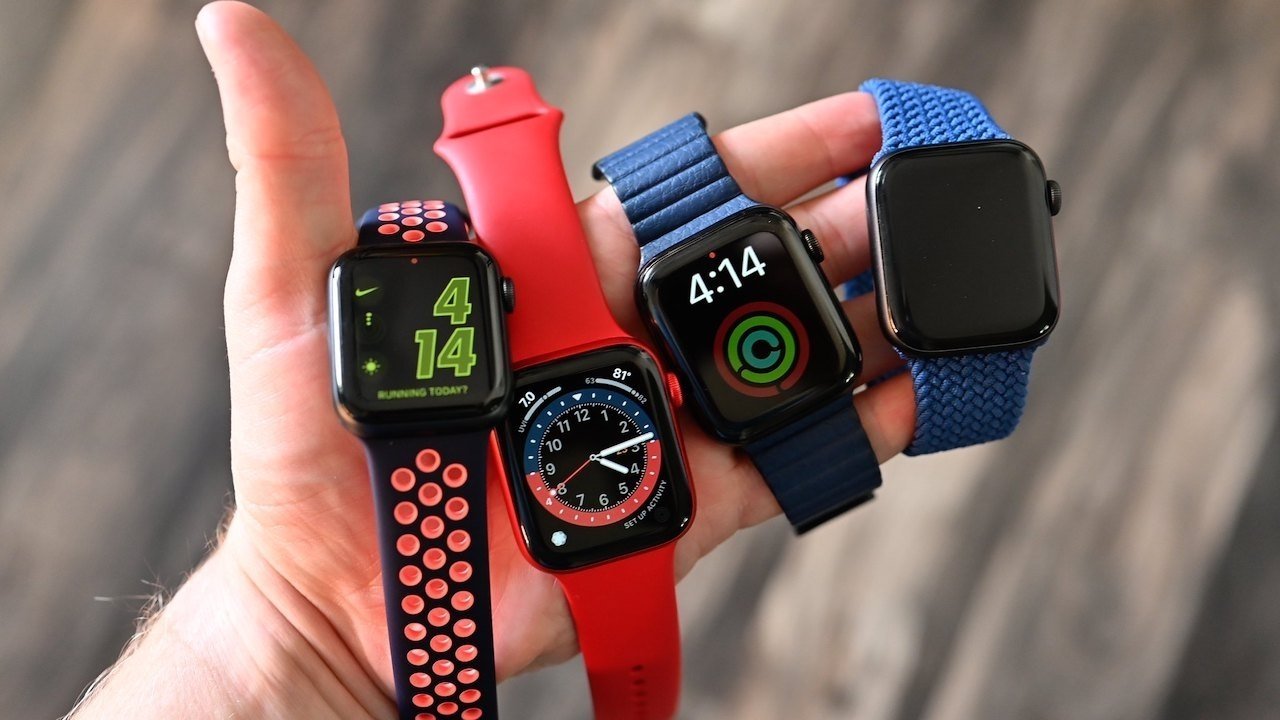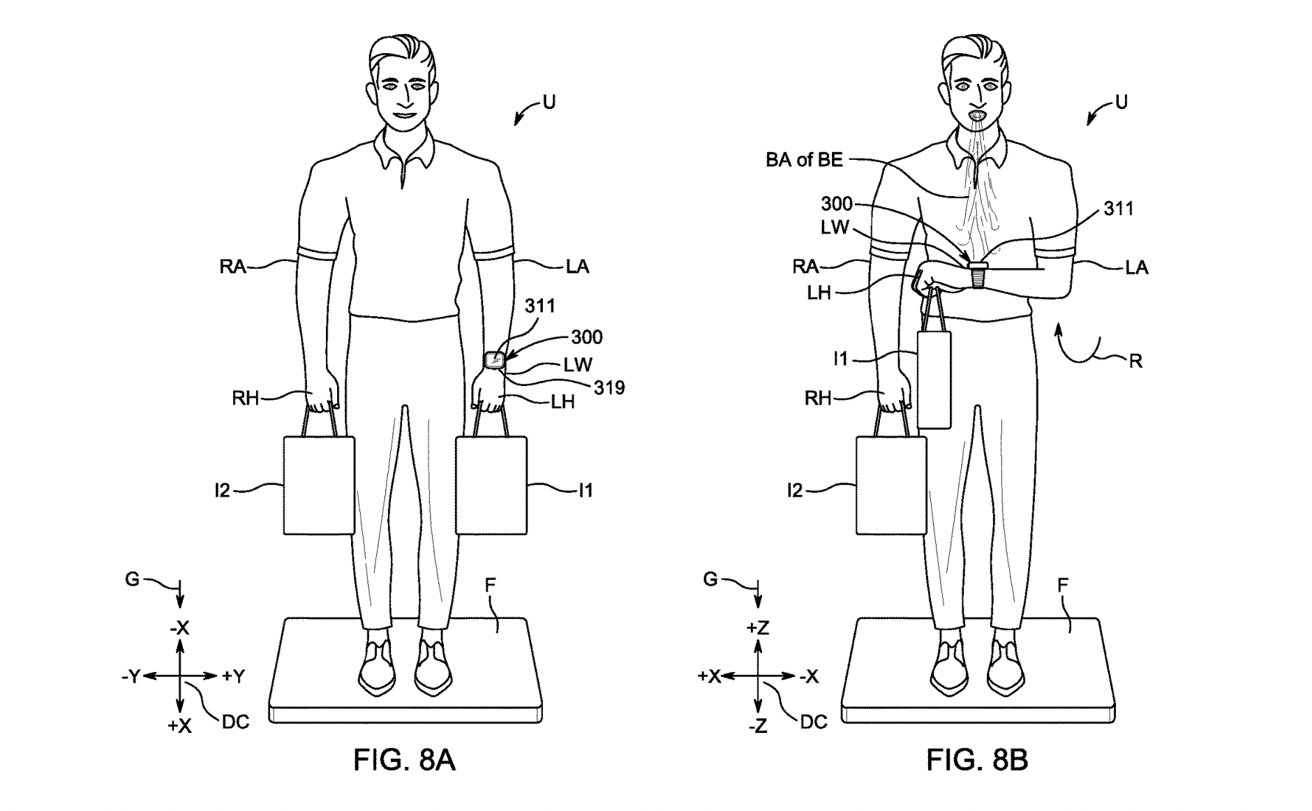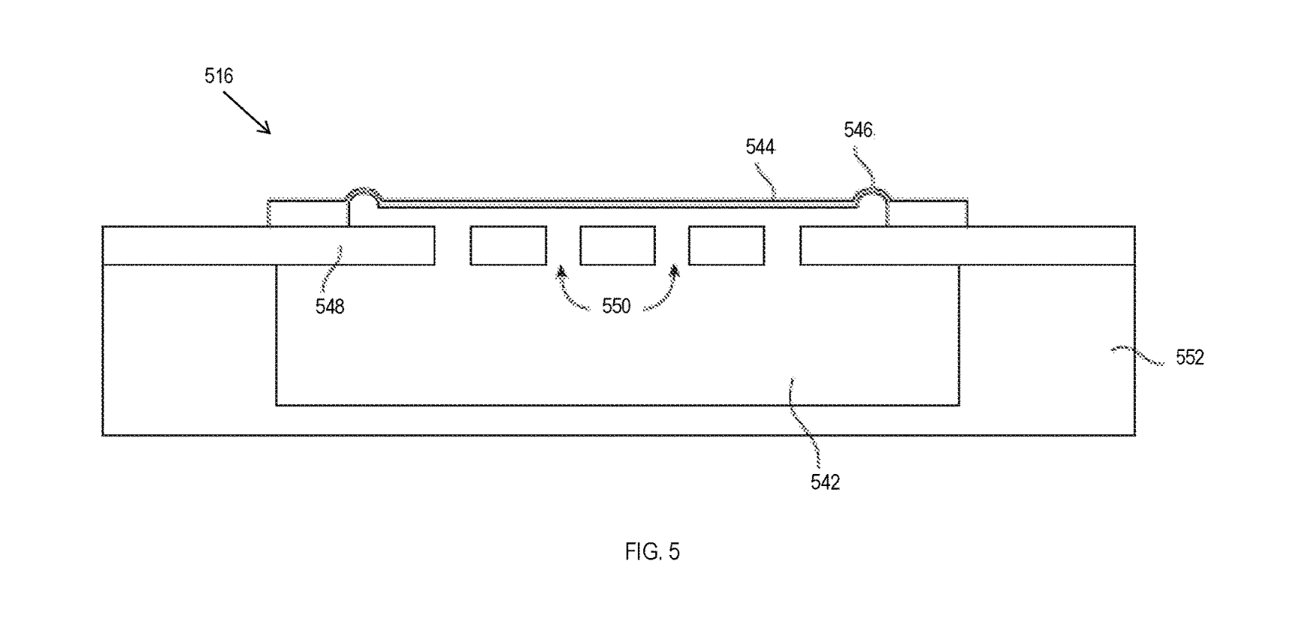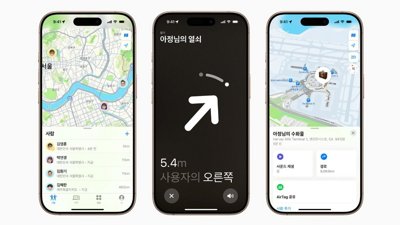Owners of the Apple Watch could one day control their wearable devices silently and with their hands full, by blowing on it to trigger changes in state.
The Apple Watch already offers users many ways to interact with the device, despite practically being limited to being used by one hand and the wearer's voice. Touch controls, the Digital Crown, and speaking to Siri handles practically handles all functions of the device when worn casually.
However, there are situations where a user may not be able to physically manage their Apple Watch with their free hand, such as if they are carrying bags. Furthermore, while this could be mitigated by speaking to the Apple Watch, there are still cases where a user may have to also remain as quiet as possible, ruling out speech.
In cases where an Apple Watch fails to wake when raised, users in such a situation have to tap the screen somehow. In one AppleInsider writer's case, that involved tapping the screen with their nose to wake it.
In a patent granted by the U.S. Patent and Trademark Office on Tuesday titled "Blow event detection and mode switching with an electronic device," Apple offers that an Apple Watch, an iPhone, or other hardware, could potentially detect a user blowing on it as a form of input.
A blow could be used to wake the device, as well as a form of confirmation for an action, such as answering an inbound phone call.
The patent describes the use of a blow detection assembly that is exposed to the environment, but slightly sheltered within the enclosure. This can include the use of a pressure sensor, detecting a change of level of pressure in a cavity caused by moving air.
The system is suggested to use detection of motion sensors to determine if the device is moving. This can be used to eliminate cases where the pressure change is detected to pass a certain threshold used to confirm a blow, but the wrist is moving significantly enough for wind to enact the change in pressure.
These blows don't have to be a single puff of air by the user, as the patent suggests the use of patterns, consisting of two or more distinct currents of air on the housing. A time limitation can also be applied, to confirm that blows are by the user and not sustained by environmental airflow.
The aforementioned motion sensors could be used in concert with the blowing mechanic to allow the user to navigate the Apple Watch interface without using a hand, with motion shifting elements around the screen and blows as selection confirmations.
The patent lists its inventor as Jiang Wang, and was originally filed on March 30, 2020. AppleInsider first learned of it as a patent application on April 1, 2021.
Apple files numerous patent applications on a weekly basis, but while the existence of a patent indicates areas of interest for Apple, it doesn't guarantee the idea will appear in a future product or service.
Blowing isn't the only hands-free control method that Apple has considered for devices like the Apple Watch. In 2019, it proposed adding more hands-free tilt controls to the Apple Watch.
One application in 2016 suggested the use of a wristband mechanism that could tell if the user was clenching their wrist or moving the wrist into different positions.
By 2020. Apple patented a way to detect electrical signals generated by muscles in the arm. The theory was that different electrical signal patterns could be used to detect specific hand gestures, which could in turn be used to manipulate the Apple Watch interface.
 Malcolm Owen
Malcolm Owen






-xl-m.jpg)


-m.jpg)







 William Gallagher
William Gallagher
 Mike Wuerthele
Mike Wuerthele


 Thomas Sibilly
Thomas Sibilly
 Wesley Hilliard
Wesley Hilliard
 Marko Zivkovic
Marko Zivkovic








3 Comments
Clever, but that's going to be kind of hard to do with masks.
I’ve done the nose thing for timers when I’m doing dishes. And no the entire hands are wet and soapy. Blowing, talking, or sone kind of shake would be nice.